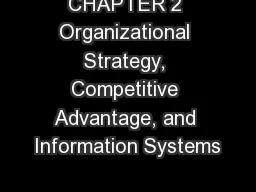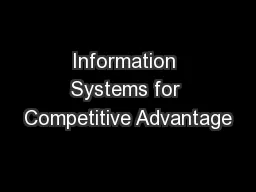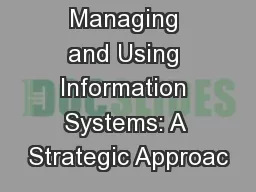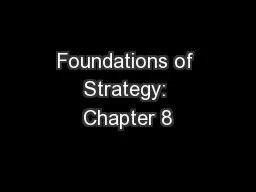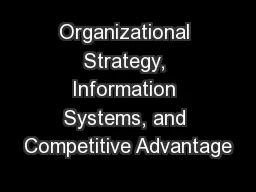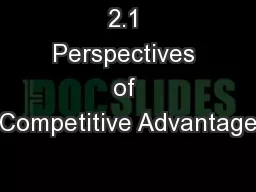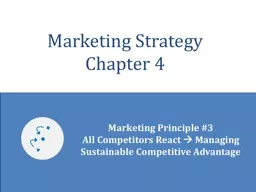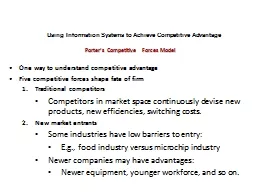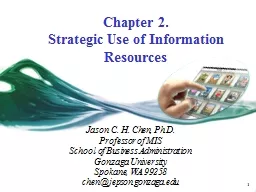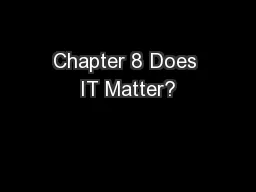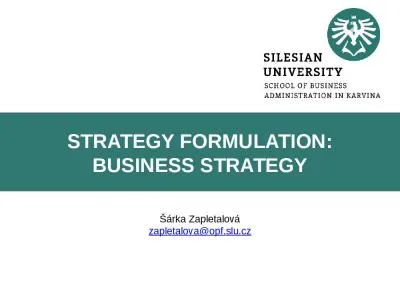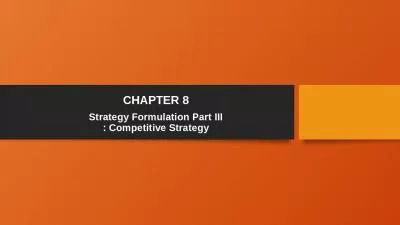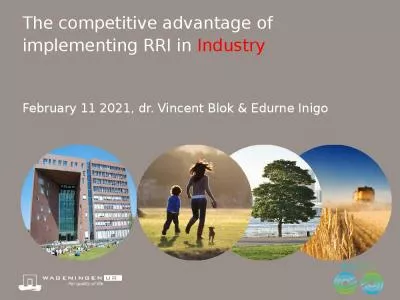PPT-CHAPTER 2 Organizational Strategy, Competitive Advantage, and Information Systems
Author : liane-varnes | Published Date : 2018-12-09
Strategy A high level plan to achieve a goal under conditions of uncertainty Wikipedia A desired outcome Gaining market share Outperform competitors Cost quality
Presentation Embed Code
Download Presentation
Download Presentation The PPT/PDF document "CHAPTER 2 Organizational Strategy, Compe..." is the property of its rightful owner. Permission is granted to download and print the materials on this website for personal, non-commercial use only, and to display it on your personal computer provided you do not modify the materials and that you retain all copyright notices contained in the materials. By downloading content from our website, you accept the terms of this agreement.
CHAPTER 2 Organizational Strategy, Competitive Advantage, and Information Systems: Transcript
Download Rules Of Document
"CHAPTER 2 Organizational Strategy, Competitive Advantage, and Information Systems"The content belongs to its owner. You may download and print it for personal use, without modification, and keep all copyright notices. By downloading, you agree to these terms.
Related Documents

